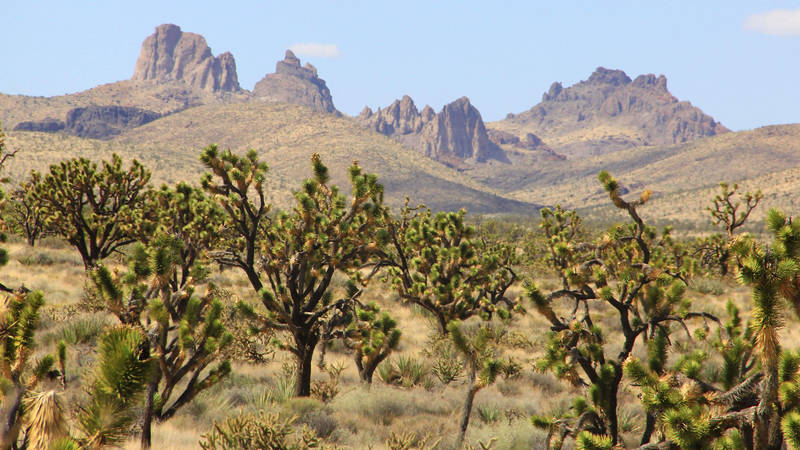Camp Hale military training ground becomes the first national monument President Biden creates using his power under the Antiquities Act. NPCA supports preserving other fascinating sites, too.
A little-known military training ground during World War II called Camp Hale prepared the U.S. Army’s 10th Mountain Division in skiing, rock climbing and snowshoeing. These soldiers helped defeat Nazi Germany and its fascist allies in northern Italy in the 1940s, and upon returning home, some of them helped launch Colorado’s skiing and outdoor recreation economy.
Camp Hale is located at 9,000-plus feet along the Continental Divide in the Rocky Mountains — a stunning landscape with elk, bears, otters, lynxes and migratory songbirds.
NPCA has urged President Biden to use his power for the first time under the Antiquities Act of 1906 to designate this historic area and its surrounding natural ecosystem as the Camp Hale-Continental Divide National Monument — and he did so Oct. 12.
NPCA advocated for Biden’s use of the Antiquities Act for Camp Hale as a monument for two main reasons:
Camp Hale remains an important place for veterans and Coloradans, and NPCA believes that the voices of military veterans are a necessary component in the work to protect and enhance America’s National Park System.
Such a move supports the administration’s America the Beautiful initiative, of which one goal is conserving 30% of the nation’s land and waters by 2030 — an aim that would safeguard our drinking water, clean air, food supplies, and wildlife; fight climate change with natural solutions; and give every child the chance to experience the wonders of nature.
The U.S. Army operated Camp Hale in Colorado’s Eagle River Valley from the early 1940s to the 1960s, housing 15,000 troops. Located north of Leadville, the camp included 1,000 buildings, plus parade grounds and weapons ranges. The harsh natural setting, with access to 12,000-foot peaks, offered the perfect training for alpine maneuvering.
Conditions at the camp were often miserable, however, prompting soldiers to nickname it “Camp Hell.” The army also housed several hundred German prisoners of war at Camp Hale.
The Army deactivated Camp Hale in 1965 and transferred the property to the White River National Forest for rehabilitation and recreational use. Today, the U.S. Forest Service offers signage for a 10-stop, self-guided tour. Because Camp Hale is on federal lands, it is eligible to become a national monument through an Antiquities Act designation by the president.
What the Antiquities Act is — and what it is not
The Antiquities Act, signed into law by President Theodore Roosevelt, marks a critical achievement in conservation and preservation. It allows the U.S. president to establish national monuments on federal lands, including landmarks, structures and objects of historic or scientific interest.
Since 1906, 17 presidents have declared more than 150 national monuments using this act, including some of our country’s most recognizable sites: the Statue of Liberty, Grand Canyon, Muir Woods and many others.
National monument designations can be used to honor the diverse experiences of our nation and make sure these important stories and connections to land and waters continue to exist for future generations. The act has been used by both Republicans and Democrats, and no U.S. president has the authority to remove protections.
Other monuments for Antiquities Act consideration
There are many incredible stories that remain untold and landscapes that remain at risk of being lost to incompatible development. NPCA encourages President Biden to continue to utilize his power under the Antiquities Act to protect special places such as:
- Emmett Till and Mamie Till-Mobley sites, Mississippi and Illinois
NPCA and its partners have advocated for years for the establishment of a national park site to honor Emmett Till, a 14-year-old Chicago native murdered in Mississippi, and his mother, Mamie Till-Mobley, who became a civil rights icon after his death.

Mamie Till-Mobley, mother of Emmett Till, speaks to reporters about her son’s death in 1955.
© Afro Newspaper/Gado/GettyWith possible anchor locations in Mississippi and Chicago, it would tell important stories of the civil rights movement — and complement existing park sites, such as Birmingham Civil Rights National Monument and the Selma to Montgomery National Historic Trail.
Renewed national conversation about race and racism in America shows the fight for justice and equality continues. When created, this park site would convey the story of a boy’s murder and his mother’s heartbreak and subsequent determination to ensure the world knew what racism in America had done to her son. It would also highlight the stories of other foot soldiers in the Mississippi Delta — all of whom made sacrifices in the long and ongoing fight for human rights.
- Avi Kwa Ame in Nevada
Avi Kwa Ame is the Mojave name for Spirit Mountain and the surrounding landscape. The region is the source of life and place of origin for 10 Yuman-speaking tribes, and the Hopi and Chemehuevi Paiute people also consider the land sacred.

The Castle Peaks as seen from Nevada, part of a proposed Avi Kwa Ame National Monument.
©ALAN O'NEILLThe proposed Avi Kwa Ame National Monument spans nearly 450,000 acres of public land and possesses some of the most picturesque, biologically diverse and culturally significant lands in the Mojave Desert.
Establishing the monument would connect fragmented protected areas within the region, becoming the missing link between the Eastern Mojave Desert and the Colorado Plateau. It would provide space and elevation for a thriving ecosystem to adapt to the impacts from climate change.
The land is a hotspot of natural diversity, including the world’s largest Joshua tree forest, high-quality critical habitat for the desert tortoise and vital migratory corridors for desert bighorn sheep.
About the authors
-
 Angela Gonzales Associate Director, Communications
Angela Gonzales Associate Director, CommunicationsAngela joined NPCA in October 2017 and is an Associate Director of Communications. She currently manages outreach and communications for the Government Affairs team and Conservation Programs.
-
 Linda Coutant Staff Writer
Linda Coutant Staff WriterAs staff writer on the Communications team, Linda Coutant manages the Park Advocate blog and coordinates the monthly Park Notes e-newsletter distributed to NPCA’s members and supporters. She lives in Western North Carolina.
-
General
-
- NPCA Region:
- Northern Rockies
-
-
Issues


